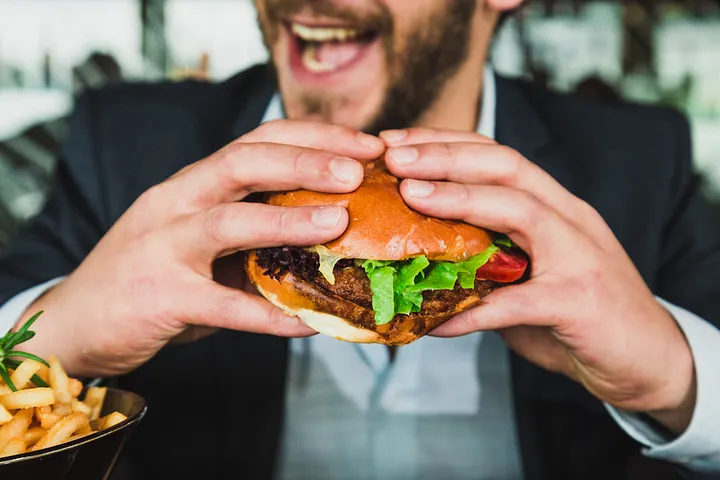In our fast-paced, modern lives, it’s easy to lose touch with our body’s natural signals. Many of us have been overfeeding (I used to be one of them) ourselves for so long that we’ve forgotten what true hunger actually feels like.
What we often interpret as hunger might just be a response to boredom, stress, or other emotions we’re trying to numb. I
In this story, I’ll explore a simple yet effective trick to differentiate natural hunger from emotional cravings. Let’s dive in.
Understanding False Hunger
Nature provides a free lunch, but only if we control our appetites. — William Ruckelshaus
Before delving into the trick, let’s discuss the concept of false hunger. It’s common for people to mistake other emotions for hunger, leading to unnecessary snacking and overeating.
For example, stress and boredom are two powerful emotions that can trigger a desire for food, even when the body doesn’t truly need it.
The Water Test
Drinking water is like washing out your inside. The water cleanses the system, fills you up, decreases your caloric load, and improve the function of all your tissues. — Kewin Stone
The next time you find yourself reaching for a snack, consider trying the water test. It’s a straightforward method that can help you determine whether your body is genuinely hungry or if there’s another underlying emotion at play.
1.Drink 500 ml of Water
Start by drinking a significant amount of water — 500 ml, to be exact. This is roughly two glasses of water; I sometimes squeeze a fresh lemon or a pinch of salt to change the taste.
Water is essential for our well-being, and sometimes, our bodies can send signals of thirst that we misinterpret as hunger.
2.Wait 20 Minutes
After drinking the water, give your body some time to process it. I prefer to wait for at least 20 minutes before deciding whether to eat.
This waiting period allows your body to signal whether it is truly in need of food or if the desire to snack was driven by another emotion.
3.Evaluate Your Hunger
Pay attention to how your body feels after the 20-minute mark. If you’re genuinely hungry, you’ll likely still feel hunger discomforts or a gnawing sensation in your stomach.
However, if the desire to eat was driven by boredom, stress, or another non-hunger-related emotion, you may find that the feeling has diminished.
Let’s look at a couple of scenarios to explain the effectiveness of the water test:
Example 1: Stressful Workday
Imagine you’ve had a stressful day at work, and you find yourself gravitating towards the office snack reserve. Instead of reaching for a bag of chips immediately, you decide to take the water test.
After drinking water and waiting 20 minutes, you realize that the craving has gone, indicating that it was driven by stress rather than genuine hunger.
Example 2: Lazy Sunday Afternoon
On a lazy Sunday afternoon, you’re watching TV and suddenly feel the desire to snack. Before grabbing a handful of cookies, you decide to try the water test.
After the waiting period, you still experience hunger, confirming that your body indeed needs food.
The bottom line
Drinking water is essential to a healthy lifestyle. — Stephen Curry
The water test is a simple yet powerful tool to help reconnect with your body’s true hunger cues.
By incorporating this practice into your routine, you can make more mindful choices about when and why you eat. This simple yet effective awareness can contribute to healthier eating habits and a better understanding of your body’s needs.
The next time you contemplate snacking, reach for that water bottle first — your body might just thank you for it.

